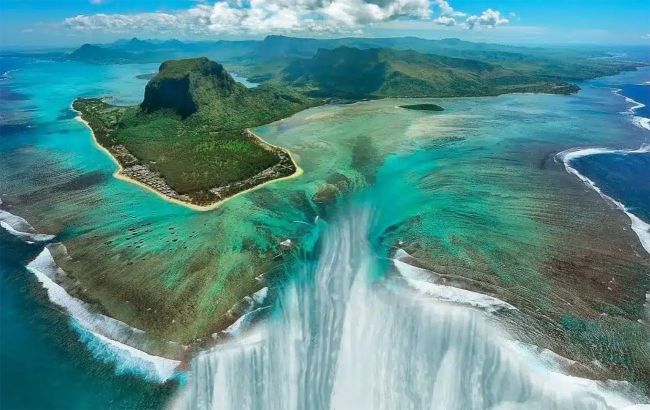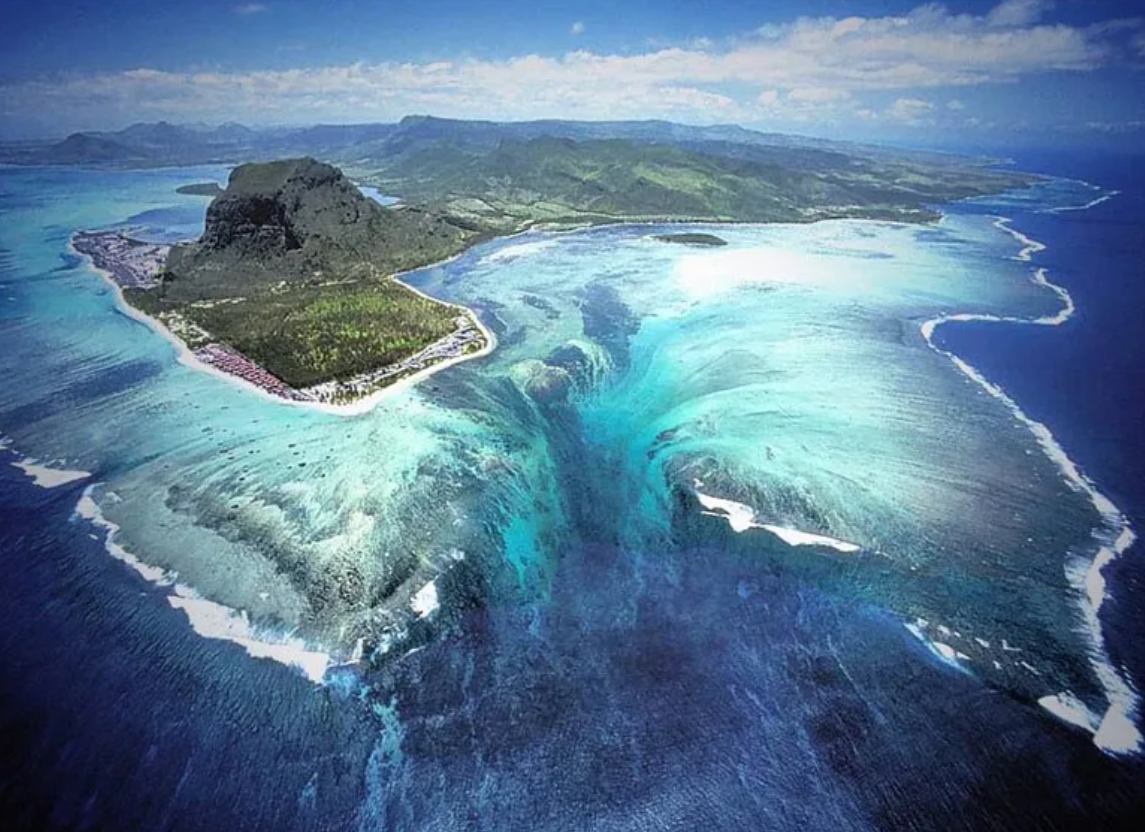Not Niagara: Largest waterfall on Earth is hidden and impacts the whole planet
 What the world's largest waterfall looks like (photo: vajiramandravi.com)
What the world's largest waterfall looks like (photo: vajiramandravi.com)
In a world where majestic waterfalls like Niagara and Angel Falls captivate with their beauty, there is another giant that surpasses them all in scale, yet remains invisible to the human eye. Hidden beneath the icy waters of the Arctic, the Denmark Strait Cataract is a true natural wonder no one has ever seen. Daily Galaxy reveals what is known about the Earth's largest waterfall. Where is it located, and how does it affect the climate?
Hidden giant: Denmark Strait Cataract
The Denmark Strait Cataract (also called the Denmark Strait Overflow Waterfall) is an unusual oceanic phenomenon that dwarfs even the tallest land-based waterfalls in both height and volume.
Unlike surface waterfalls that form when rivers cascade over cliffs, this underwater flow operates on entirely different principles.
Stretching to an astounding height of approximately 3,500 meters (far surpassing Angel Falls (979 m), the tallest terrestrial waterfall), this submerged giant flows silently between Iceland and Greenland and plays a vital role in shaping global ocean currents and the Earth's climate. Scientists are only beginning to understand its immense power.
The waterfall begins thousands of feet below the surface, where denser, colder water from the Nordic Seas (including the Greenland Sea) plunges downward into the Atlantic Ocean. This cold, salty water is heavier than the warmer, less salty water of the North Atlantic and therefore sinks beneath it. The total length of the cataract is about 480 kilometers.
As it flows down the slope, this water creates a powerful current with a flow rate exceeding 3.2 million cubic meters per second. By comparison, that's 35 to 50 times the flow of the Amazon River, the largest river on Earth by volume!
Despite its colossal size, the Denmark Strait Cataract remains hidden beneath more than half a mile (about 800 meters) of ocean water. It flows silently, with no roar or mist to reveal its presence at the surface.
The water flows over a submerged ridge, a geological formation left by glaciers during the last Ice Age. This ridge acts as the precipice for the incredible drop that results in a current far more powerful than any waterfall visible on land.
Climate change and the Earth's largest waterfall
The Denmark Strait Cataract's impact extends far beyond its physical scale. By channeling cold, dense water from the Nordic Seas into the Atlantic, it plays a critical role in regulating the Earth's climate.
This process sustains the Atlantic Meridional Overturning Circulation (AMOC), a complex system of ocean currents that distributes heat and nutrients globally. Without this "conveyor belt," the weather patterns we rely on—from Europe's mild winters to the plankton blooms that support ocean life—would be drastically different.
 The Denmark Strait Cataract, a hidden underwater waterfall in our oceans (photo: currentaffairs)
The Denmark Strait Cataract, a hidden underwater waterfall in our oceans (photo: currentaffairs)
However, as climate change accelerates, the cataract's flow may be altered. Researchers are closely monitoring these changes, as they could influence global weather, from ocean temperatures to hurricane paths and intensities.
Marine scientist Anna Sanchez Vidal emphasizes that shifts in oceanic processes are already being observed in regions like the Catalan coast.
As warming Arctic waters affect salinity and temperature gradients (which drive this flow), the once-stable current in the Denmark Strait could begin to slow or change.
This could lead to major shifts in ocean dynamics, potentially triggering unpredictable climate consequences.
Polar regions' role in Earth's ocean circulation
Denmark Strait Cataract requires a closer look at the crucial role polar regions play in Earth's global ocean system. In these frigid areas, dense water masses formed by the freezing of sea ice sink to the ocean floor. These downwellings generate vast deep-sea currents that shape the global climate.
David Amblàs from the Department of Earth and Ocean Dynamics at the University of Barcelona explains: "The poles are the regions where most of the dense water masses—generated by the formation of sea ice at the surface—eventually reach the global ocean floor."
He adds: "The polar areas are like the heart of the oceanic circulatory system: they pump cold, dense water into the great oceanic troughs through the ‘heartbeats’ made by overflows of dense water."
These movements not only affect the climate but also have a profound impact on marine ecosystems, which depend on these deep currents to deliver vital nutrients to the surface. In this way, the invisible Denmark Strait Cataract is a key part of the global mechanism that sustains life on our planet.
Earlier, we shared power spots in Ukraine worth visiting at least once in a lifetime.

